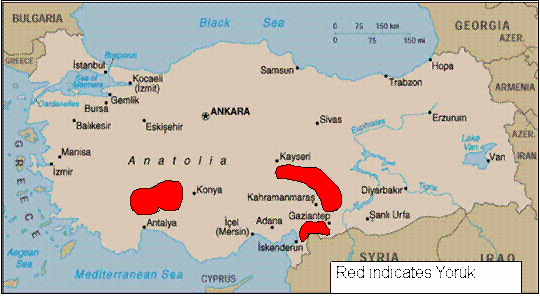Central Anatolia, along with the historical region of Azerbaijan, is one of the few places in the Middle East that is suitable for nomadic pastoralism. That is why it was occupied first after the Seljuk conquest of Asia. For a long time this land was the stronghold of the Great Steppe until the rise of the Ottoman Empire. It was a settled state, where the Turkic elite staked on the mass conversion to Islam of the Byzantine population and the Balkan Slavs.

Therefore, the urban culture of the Ottomans, steeped in the power of the sultan and his administrative apparatus, was always in serious conflict with the nomadic tribal system, which presupposed a greater degree of democracy. Even after the liquidation of the great powers of the nomadic Turks, the Kara Koyunlu and Ak Koyunlu confederations, Eastern Anatolia was shaken by numerous popular uprisings.
The Istanbul authorities did not trust the nomads, considering them potential rebels and savages unfamiliar with the refined Ottoman culture. Therefore, the inhabitants of this unruly region were resettled en masse in Syria and Iraq, and their former lands were given to farmers who converted to Islam.
Nevertheless, some number of pastoralists in the central and eastern part of Turkey still survived. Their number is now estimated at about one million, and the number of their assimilated descendants at more than three million. They are the heirs of the Seljuk conquerors of the 11th century, with less ethnic participation of local peoples. It is true that only the smallest fraction of these people are now traveling with their herds.

Before the Ottoman sultans increased the size of the «new army». — the Janissaries, their main military force was the nomadic Turkmen. Therefore, they tried to settle them in strategic and suitable places: in important points in Asia Minor and in the Balkans. In those times they were allocated to a separate sanjak. Standardly it was an administrative-territorial unit, but the Yuryuk sanjak represented actually all nomads of the country, who lived in different places.
The concept itself appeared in the 14th century and was a noun formed from the Turkic word «to walk». That is, in translation, yuryuki are nomads. They were opposed to the settled Turkicized population, descendants of Turks, Middle Eastern peoples and Christians converted to Islam. In parallel, the word «Turkmen», which is older in origin, was and still is used in relation to the Nakh.
Since the Yuriks were an administrative entity, they were not a people or a group of tribes. They included all nomads of the Ottoman Empire: early Seljuk tribes that settled Asia Minor in the 11th century; descendants of the Byzantine military colonists — Pechenegs and Polovtsians; Turkic clans of various origins that were expelled from Central Asia by the Mongols or came with them. The clans of the Kara-Koyunlu and Ak-Koyunlu confederations, the ancestors of the present-day Azerbaijani people, also joined them. The only things they had in common were their nomadic life and being in the status of a Muslim «Cossack army».

Due to not so abundant natural conditions and the necessity to share land with settled inhabitants, goats and sheep were their main means of subsistence. Therefore, the names of the Yuryuk tribes often include the names of these animals. For example, there are tribes Karakechili and Sarykechili — respectively, «black goats» and «yellow goats». Compare this with the names of the Ak-Koyunlu and Kara-Koyunlu powers, which mean «white-baran» and «black-baran».
Because of the advent of civilization back in the Ottoman era, most of the Jurüks were forced to abandon nomadic life and switch to semi-sedentary pastoralism with elements of agriculture. Nowadays, only a small part of them are real nomads. In fact, in winter time Yuruk tents can be found only in the vicinity of the old Seljuk capital of Konya.
Nevertheless, their name means not only their way of farming, but also their special steppe culture and belonging to a large patriarchal family. The Yurüks vaguely feel themselves to be a separate ethnic group from the Turks, and ancestral affiliation is important to them, even if a particular family has not been nomadic for generations. Those of them who have retained their dialect and have not switched to modern Turkish speak a special form of the Turkic language. Unlike Old Ottoman, it is almost devoid of Persian and Arabic words, but has many notions of nomadic life.

Turkish patriots see in these people the last living memory of the medieval greatness of the Oghuz nomads. Therefore, there are some Turks who consider themselves Yurüks but do not belong to their tribes.
